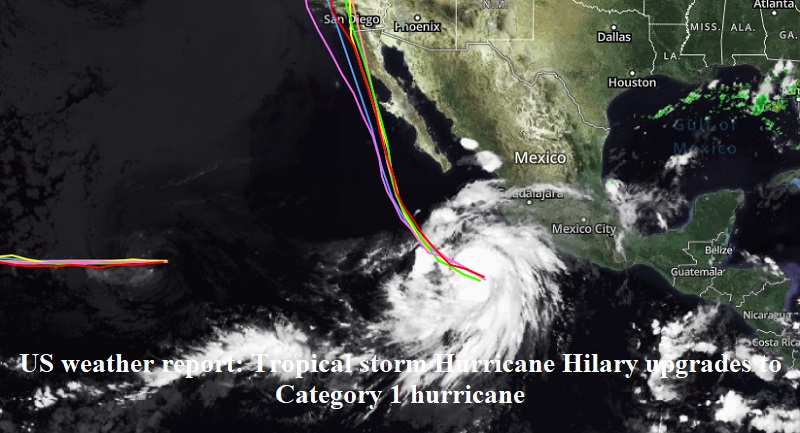
Tropical storm Hurricane Hilary was elevated to a Category 1 hurricane on Thursday (August 17), and American meteorologists anticipate it will deliver substantial rainfall to parts of the United States after making landfall in Mexico.
By Thursday morning, Hurricane Hilary was positioned 530 miles (852 kilometers) southwest of Cabo San Lucas, Mexico, boasting maximum sustained winds of 85 miles per hour, accompanied by stronger gusts – conditions conducive to swift escalation.
The National Hurricane Center (NHC) indicated, “Rapid strengthening is forecast, and Hilary could become a major hurricane by tonight or early Friday.”
Progressing in a west-northwest trajectory, Hilary is projected to evolve into a potent Category 4 hurricane late on Thursday night or early Friday morning, according to reports by The Weather Channel based in the United States.
In the eventuality that the hurricane makes landfall within the United States, meteorologists predict its potency will diminish. Nonetheless, considerable downpours are anticipated, particularly in California, where several months’ worth of precipitation could amass within a day or two, potentially inducing flash floods.
If Hilary indeed reaches California’s shores as a tropical storm, it will mark the first such occurrence in 84 years, as per CBS News reports.
Subsequently, as Saturday and Sunday unfold, the hurricane is anticipated to progressively weaken upon encountering cooler ocean waters.
The NHC specified that the storm might bring about elevated winds, surf, and rainfall in southern California. Parts of Nevada, Arizona, and New Mexico could also experience its effects.
Impacts from the storm could begin manifesting from Friday through the commencement of the following week. The peak of Hilary’s most substantial rainfall within the United States is foreseen to manifest on Sunday and Monday, according to the NHC.
Daniel Swain, a climate scientist at the University of California, Los Angeles, highlighted to CNN that certain drought-stricken zones in California might potentially receive an accumulation of “multiple years’ worth of precipitation.”
Regardless of the flood risk, experts assert that the rainfall would aid in mitigating drought conditions and recharging groundwater in arid portions of the Southwestern United States.
The United States Drought Monitor indicated that drought conditions expanded in New Mexico while remaining constant in California and Arizona throughout the week.

Post Your Comments